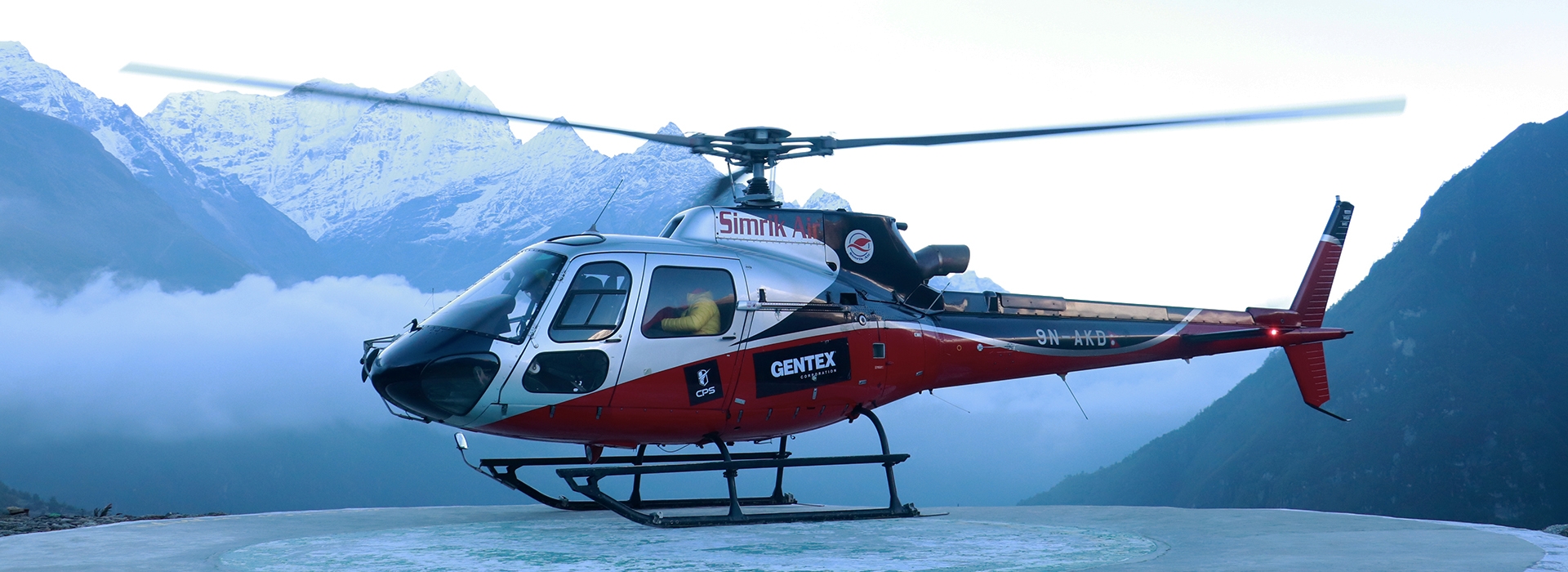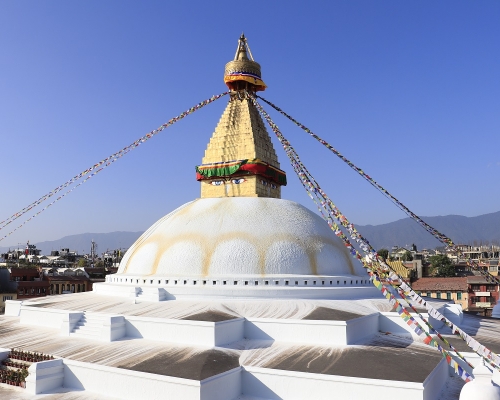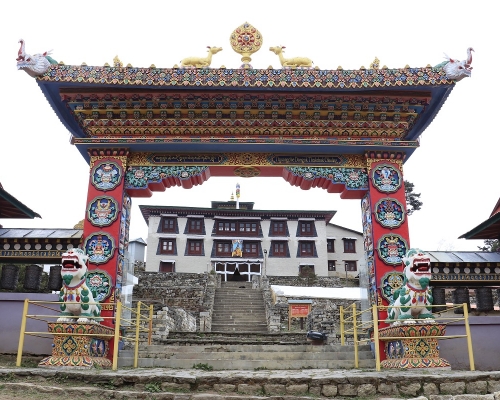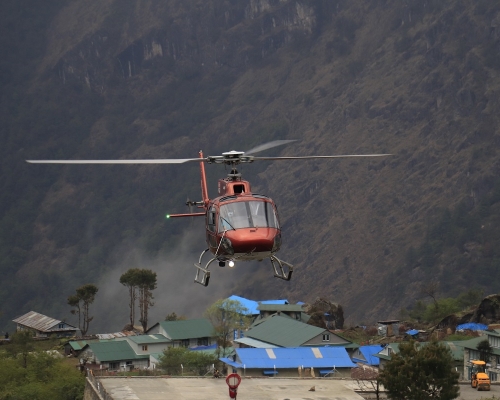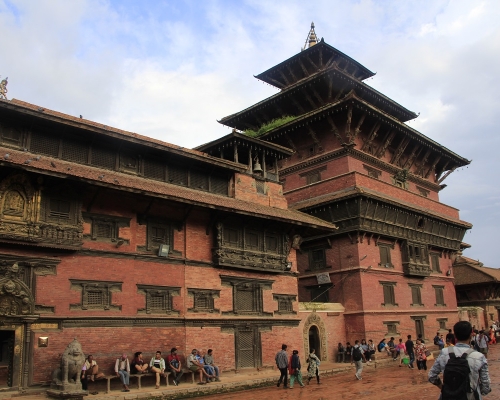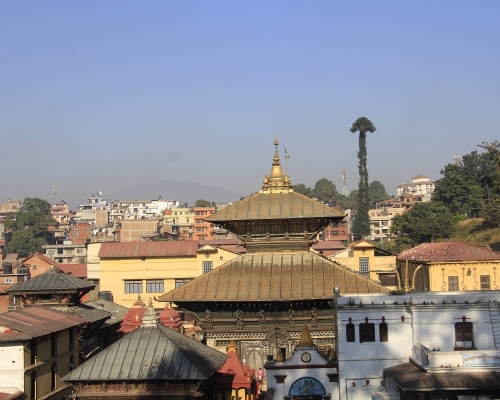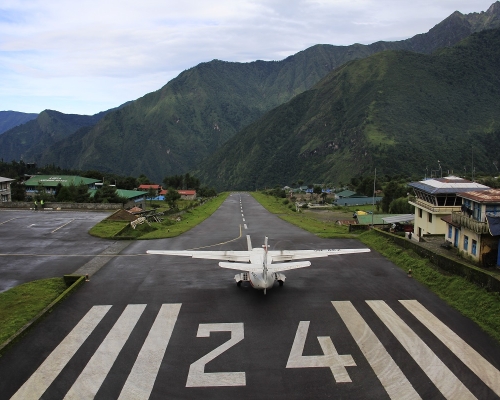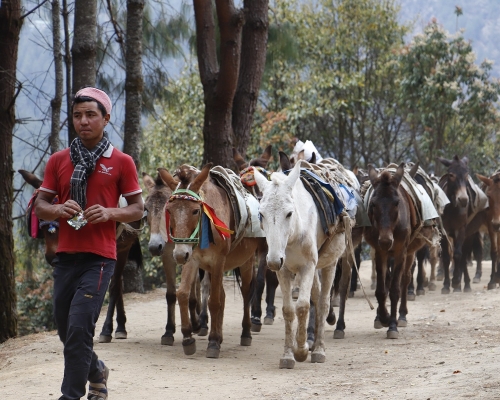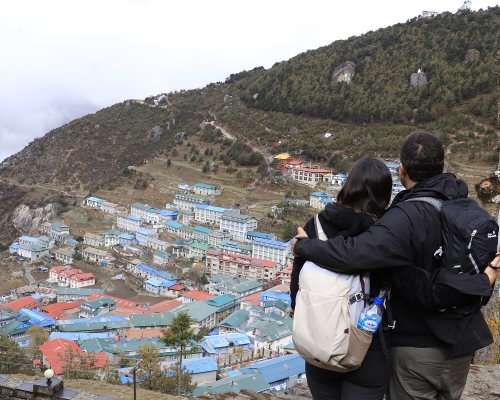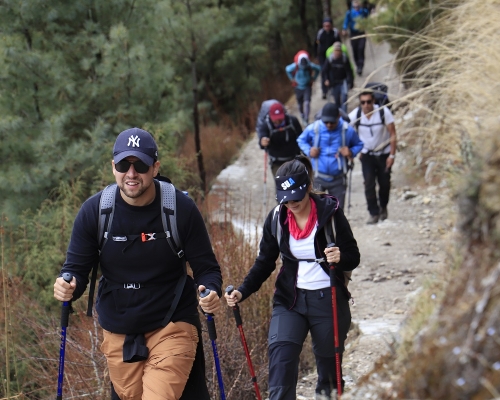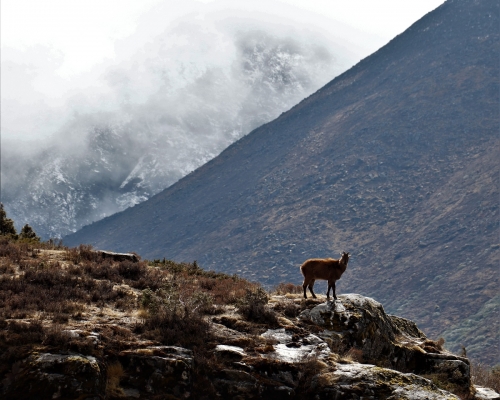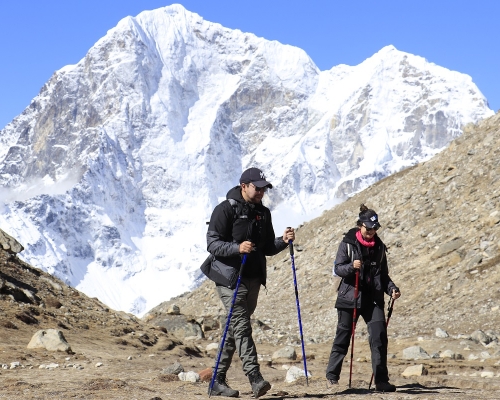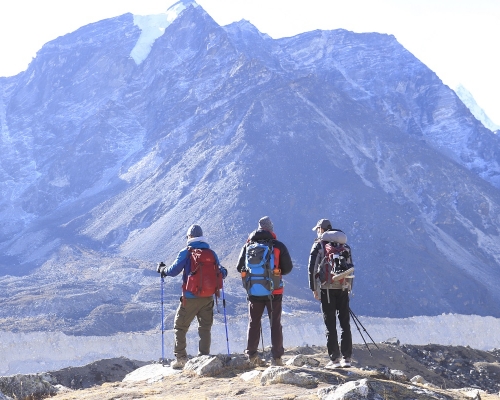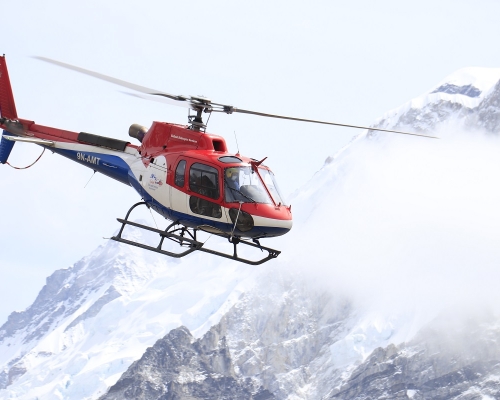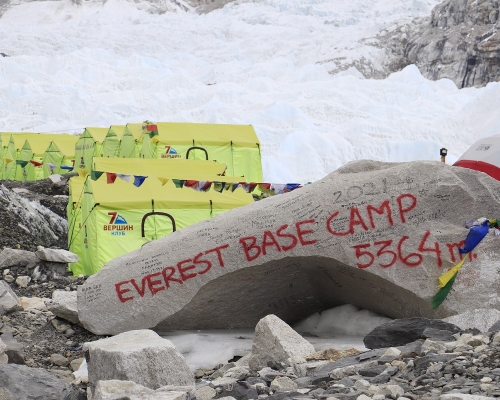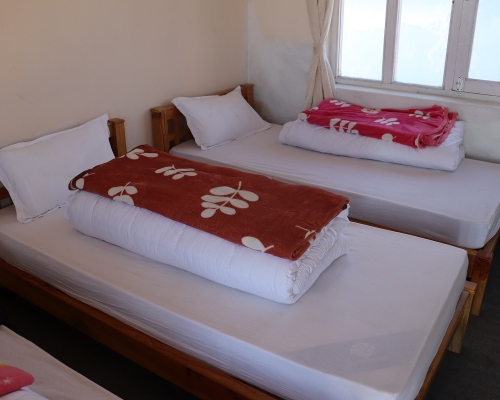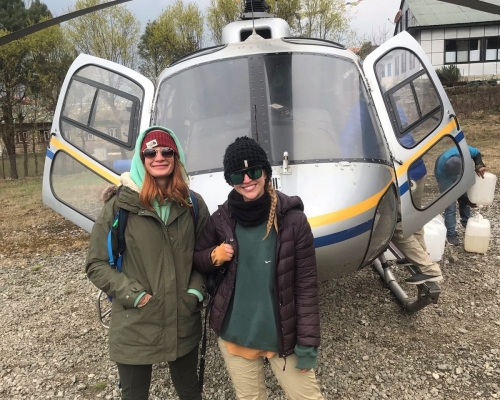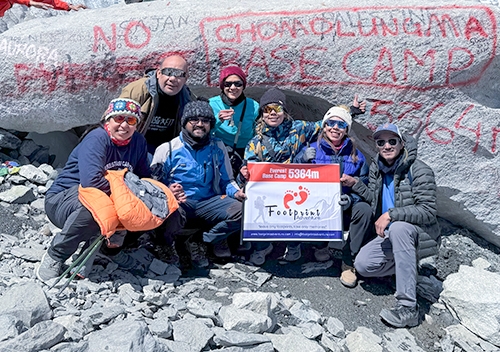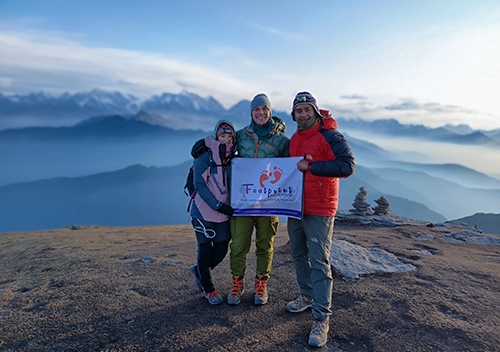The Everest Base Camp Helicopter Trek is a journey that artfully combines trekking with an exhilarating helicopter flight in the lap of the Khumbu region. It is a journey that is certain to give a once-in-a-lifetime experience! The journey to the Everest base camp of the world's tallest peak is followed by a relaxing helicopter ride back. Enjoy the region's unique Sherpa culture as well. Trekking over the breathtaking Himalayan terrain is followed by a thrilling helicopter flight. The magnificent vistas of the Himalayas and the varying terrain below are certain to live in your memory for many years. It is the most valuable experience possible.
The Everest Base Camp Helicopter Trek allows you to fully understand the famed Sherpas and their culture. Along the route, the traditional Sherpa villages and mountain settlements offer insight into the lives of the ethnic people. Along the trekking trail are mani-stone walls and little chortens with colorful prayer flags. It is a hiking experience that is both naturally and culturally lovely.
Start the journey with a flight to Lukla Airport and then follow the trekking trail through various ethnic Sherpa villages on your way to the base camp. Visit places like Namche Bazaar, Dingboche, and Tengboche as you walk under the verdant alpine forests. Enter the Sagarmatha National Park, a popular national park in Nepal, and get the opportunity to catch rare glimpses of Khumbu’s endangered animals such as Danphe, Yaks, Himalayan Tahr, Musk Deer, and Snow-Leopard. Enjoy the rhododendron-lined path as the distant views of Mount Everest accompany you. Feast your eyes on the sight of many prominent mountain peaks like the Ama Dablam, Lhotse, Nuptse, the Kongdi Ri, Thamserku, and Mt. Everest, among many more as you trek along river valleys. Visit the famous vantage point of Kalapatthar, where you can get spectacular panoramic views of the entire Mount Everest massif.
The Everest Base Camp Helicopter Trek then allows you to board a helicopter and view the huge peak from above. The breathtaking beauty of the Khumbu area as seen from a helicopter is beyond description! The sensation of utter excitement and astonishment is unavoidable! Therefore, the Everest Base Camp Helicopter Trek is for you if you want to experience the traits and characteristics of the Khumbu with the added thrill of a helicopter ride. You are always guaranteed the greatest possible services. Prepare yourself for one of your life's most incredible hiking adventures with us.
Highlights of Everest Base Camp Helicopter Trek
- UNESCO World Heritage Sites excursion in Kathmandu
- Start the tour with a picturesque flyover to Lukla Airport
- Join the ever-exciting trail of Everest Base Camp and retrace the footprints of thousands of trekkers and mountaineers
- Enjoy being in the Everest Region, which is raw, rural, and heavenly
- Get to know the culture, tradition, food, and inspiring lifestyle of the Sherpa community throughout the trek
- Ramble through the dense woods of Sagarmatha National Park
- Walk over the famous suspension bridges that are full of colorful prayer flags
- Reach Everest Base Camp(5,364m) and Kala Patthar(5,545m) to experience the beauty
- Get glimpses of numerous iconic mountains of the region other than Everest like Ama Dablam, Lhotse, Cho Oyu, Pumori, etc
- Helicopters fly back to Lukla witnessing the bird-eye views of the Khumbu region
- Complete the Everest Base Camp Trek within nine days smartly(Choosing a helicopter ride), avoiding 4 to 6 days
- A cultural show with delicious Nepali cuisine in Kathmandu as a farewell dinner

